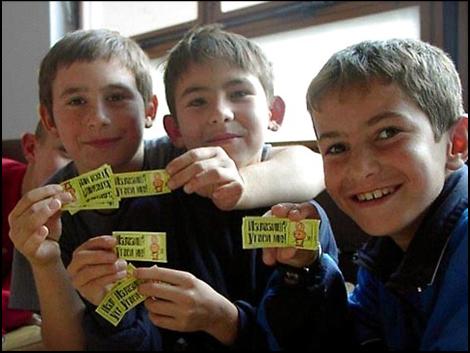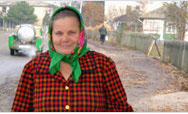
Photo:Vesna Bakic
Serb students with GS educational materials.
“The Program has full support from our Ministry as it backs the government's initiative to overcome energy shortages and environmental problems. The great interest of teachers and students significantly contributed to the successes of the Green Schools.”
- Gasa Knezevic, Minister of Education and Sport.
|
Initiative
USAID is working with educational institutions as part of a multi-ethnic and bilingual initiative to introduce energy and environmental education, as well as conservation, into the school curriculum in Southern Serbia. Serbian and Albanian teachers are teaching classes together for the first time and jointly working to improve energy efficiency.
10,000 pupils and 800 teachers participated in USAID’s Greens Schools program during the 2002/03 school year. The Green Schools program mobilized new resources for energy efficiency while introducing new teaching tools and concepts that encourage team work and the active participation of students in the educational process.
Results
Students, teachers and parents from all neighboring villages attended performances which highlighted the effects of dangerous pollutants,
|


